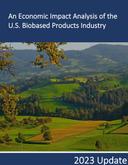Bioenergy VC firm talks getting noticed and the latest $300 million funding round
July 6, 2012
BY Luke Geiver
A company spokesperson from Braemar Energy Ventures, the
same firm that just closed its third funding round (totaling $300 million) that will be used for investment in conventional and alternative energy, would not provide comment for me on the significance of adding both new and strategic investors to this third round. But, the spokesperson did respond to my non-formal, hypothetical question, “If I’m a CEO of a renewable energy production company,” I asked, “what do I need to do to get noticed by Braemar, or to ultimately become an investment of the team?”
This is what I was told: “I think the best way to answer
this is to give you a little insight on Braemar’s investment criteria. Braemar
focuses on venture- and expansion-stage energy technology companies,
specifically companies with superior technologies, business processes and an
experienced management team. A typical Braemar investment (in a given company)
ranges from $5 million to $25 million, with a standard investment between $1
million and $10 million—in a single round of financing.”
The spokesperson also pointed out the unique nature of
this funding round and explained why it is significant compared to the previous
two rounds. Don’t confuse this funding round, which included investment parties
ranging from the Government of Singapore to the California State Teacher’s
Retirement System, with cleantech, I was told. This money will go towards the
energy technology space, specifically those that have an innovative approach to
improving performance, increasing productivity and enhanced efficiency all
while minimizing energy consumption, waste and/or pollution, according to the
spokesperson.
Advertisement
Advertisement
For the bioenergy industry, all of that means companies
similar to previous Braemar investments (Solazyme, Enerkem, Verenium, OPX
Biotechnologies and NexSteppe) should take notice. And, for project developers
or renewable energy companies pondering the possibility of finding the necessary
funding, consider how this third round compares to Braemar’s first (the company
was formed in 2002). Fund I closed at $55 million, Fund III, which was
oversubscribed, closed at $300 million as noted previously. The company, the
spokesperson noted, “recognizes the challenging investment environment but
believes it will breed great opportunities and innovation in our sector.”
Advertisement
Advertisement
Related Stories
The U.S. Department of Energy Bioenergy Technologies Office (BETO) announced up to $23 million in funding to support research and development (R&D) of domestic chemicals and fuels from biomass and waste resources.
The U.S. DOE has announced its intent to issue funding to support high-impact research and development (R&D) projects in two priority areas: sustainable propane and renewable chemicals and algal system cultivation and preprocessing.
Sens. Sherrod Brown, D-Ohio, and Pete Ricketts, R-Neb., in August introduced the Renewable Chemicals Act, a bill that aims to create a tax credit to support the production of biobased chemicals.
The Chemical Catalysis for Bioenergy Consortium, a consortium of the U.S. DOE’s Bioenergy Technologies Office, has launched an effort that aims to gather community input on the development of new biomass processing facilities.
USDA on March 8 celebrated the second annual National Biobased Products Day, a celebration to raise public awareness of biobased products, their benefits and their contributions to the U.S. economy and rural communities.
Upcoming Events










